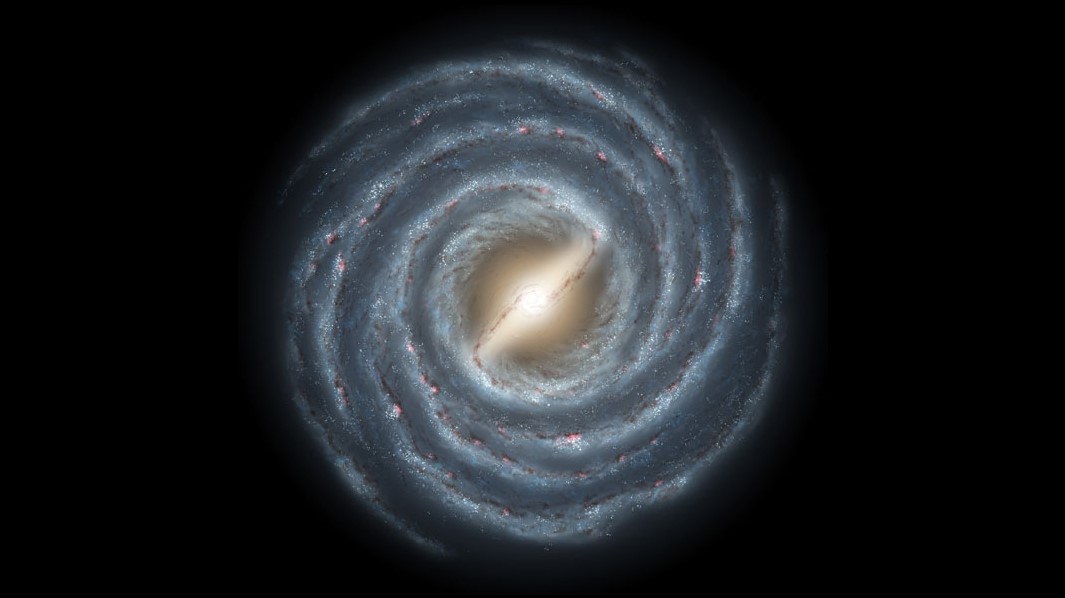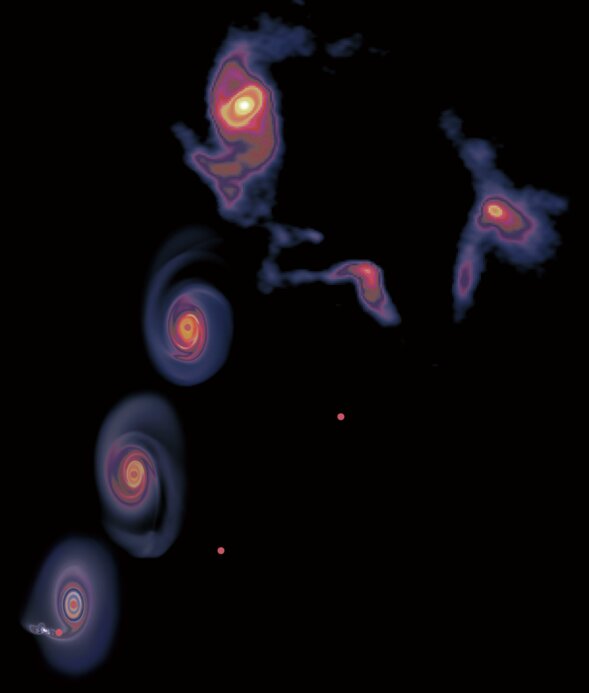Astronomers observing the center of our Galaxy have found a young giant star with a gas-dust disk. This ring has spiral arms similar to those of galaxies. Scientists believe that their appearance caused the passage near a massive object.

Star with spiral arms
Scientists from Chinese, American and European universities recently reported the discovery of an unusual young star. They studied the central region of the Milky Way and with the help of the Atacama Large Millimeter/submillimeter Array (ALMA) radio antenna array and became interested in a gas-dust disk around one of the young luminaries in this region.
A gas-dust disk is a common phenomenon for many young stars. However, they are mainly studied for objects of small mass. This time, scientists managed to see such a structure in a luminary that weighs 32 times more than the Sun.
Using ALMA made it possible to obtain an observation accuracy of 40 milliarcseconds. This turned out to be enough to make out a disk with a width of 4000 au, surrounding only the O-class star being formed. It turned out that there is a spiral structure in it, similar to the arms characteristic of galaxies. Previously, nothing like this has been observed for objects of stellar mass.
However, an explanation was quickly found for this phenomenon. According to scientists, the reason is the close passage of a massive object near the star about 10 thousand years ago. The mass of the object is estimated to be at least three solar.

What is happening in the center of the galaxy
Scientists are particularly interested in the fact that all this happened near the center of the Milky Way. This region is not only home to the supermassive black hole Sagittarius A*. There are also a variety of gas and dust clouds, mysterious structures that are active in the radio range, pulsars and other objects.
Finally, there is enough molecular hydrogen here, which creates unique conditions for star formation that are not similar to those that exist in clouds in the vicinity of the Galaxy. On the one hand, there is a lot of “building material” here. On the other hand, a supermassive black hole pulls it all the time.
In such conditions, massive stars are formed, whose life is short, but bright. A new study suggests that they also often get close to each other. And these processes generate amazing shapes, such as a star with spiral arms.
According to phys.org
Follow us on Twitter to get the most interesting space news in time
https://twitter.com/ust_magazine
